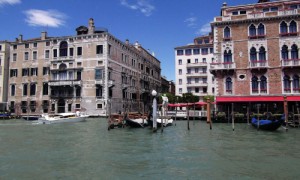Palazzo Minotto, Venice
Palazzo Minotto, Venice
Two masonary surfaces, one made of brick and the other a brick wall covered with venetian “Marmorino” plaster render on the first floor of Palazzo Minotto in Venice, were chosen to assess the extraction capabilities of soluble salts by the Westox Cocoon poultice produced by Westlegate Pty Ltd, Australia, in comparison to the standard system used in current practice, composed of a mixture of Arbocel and Sepiolite. The performance of the poultices was evaluated by determining the salt content in the poultice materials (direct extractive capacity) and in the treated wall surfaces (indirect extractive capacity) by comparing the before and after of two poulticing applications. The salt content of the experimental areas was measured in samples taken at various depths with a drill.
The results have shown, in samples taken at various depths after the second application, a very similar residual presence of salts both in the brick and in the Marmorino for the two treatments.
However, the situation after the first application shows a different behaviour, depending on the type of poultice used. The walls treated with Westox Cocoon showed a decrease in the saline content in the most superficial layers, while those treated with Arbocel and Sepiolite show an increase in saline content in depth, as if this poultice summoned the salts from within the wall without being able to absorb them. As regards the extraction capacities, this is significantly more constant for the Westox Cocoon poultice, which shows to be able to extract a good amount of salt after the first poulticing. This amount increases with the second application. The Arbocel + Sepiolite poultice seems, initially after the first application, to summon the salts from within the wall without being able to extract them. For this poultice, these last results indicate clearly, more so than for Westox Cocoon, the need for at least two applications in sequence.


